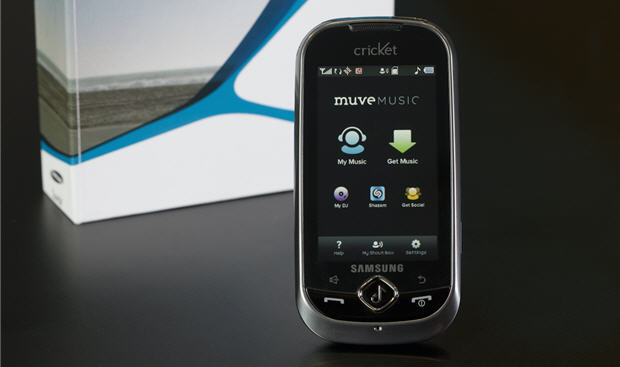
The customers of wireless provider Cricket Communications tend to skew toward the lower end of the income scale. Many have neither computers nor credit cards. Which means they’ve been left out of the iTunes revolution. As a result, some have taken to obtaining their music via file-sharing sites, often illegally, cobbling together an acquisition system that involves downloading tracks onto computers belonging to friends, libraries, or schools, then transferring the music to their phones.
It’s not an ideal experience for the users. And it’s the opposite of ideal for the music industry. Which is why Cricket figured that if they could integrate a music service with their prepaid cellphone plans, they might be able to bring some of those pirates into the music-paying fold. And, of course, expand their own customer base in the process.
Cricket is unveiling the fruits of those efforts at the Consumer Electronics Show in January. The new “Muve Music” service will be bundled into Cricket’s high-end wireless plan. For a flat $55 monthly fee, subscribers won’t only get unlimited voice, text, and messaging, they’ll also get unlimited access to the catalogs of Universal, Sony, Warner, and EMI.
“Our customers love music,” Jeff Toig, Cricket’s vice president and general manager of voice and data products, told Fast Company. “It is among the most important things in their lives. But the entire digital ecosystem was built around the computer and the credit card.”
Muve Music will also let users create ringtones from the tracks. The entire system was designed to be simple, elegant and secure—from the Samsung Suede phone (pictured above), which will carry the service, to the user interface, to the security technology which blocks access to music when a user’s subscription lapses. Cricket is betting the ease of the experience will lure music lovers away from the file-sharing sites and into its subscription plans.
The music industry will be watching closely. “We think this is game changing,” Michael Nash, executive vice president of digital strategy and business development at Warner Music Group, told Fast Company. “It’s unlike anything that’s been launched in any other market place.”
Music publishers will receive a cut of Cricket's user fees. (The wireless company wouldn’t divulge the exact amount.) Artists whose music is included in the deal will be paid according to how much their songs are used. Publishers will receive a report from Cricket on which songs are getting downloaded and turned into ring tunes. The more play an artist gets, the bigger their share of the publishers’ revenue.
The success of the project will ultimately depend on the scale of the user base. Right now Cricket has between five and six million customers. The process of turning pirates into paying customers is attractive to the music industry. But for it to remain compelling, the overall user base will have to grow to generate an attractive amount of revenue. And the music industry, for its part, will have to expand the model to other services and carriers.
The potential for the model grows with the proliferation of smartphones. A study by Electronics.ca Publishing estimates there will be over 800 million smartphones in the world in 2015. The recording industry only needs to turn a small percentage of those cellphone owners into monthly music subscribers to make the access model worthwhile. Said Warner's Nash: “If we can make a significant dent in attaching the music proposition to the broadband and mobile device propositions, there’s a clear path for the music industry to return to growth."http://www.fastcompany.com/1710741/can-a-service-built-for-pirates-save-the-music-industry?partner=rss&utm_source=twitterfeed&utm_medium=twitter&utm_campaign=Feed%3A+fastcompany%2Fheadlines+%28Fast+Company+Headlines%29&utm_content=Twitter

No comments:
Post a Comment